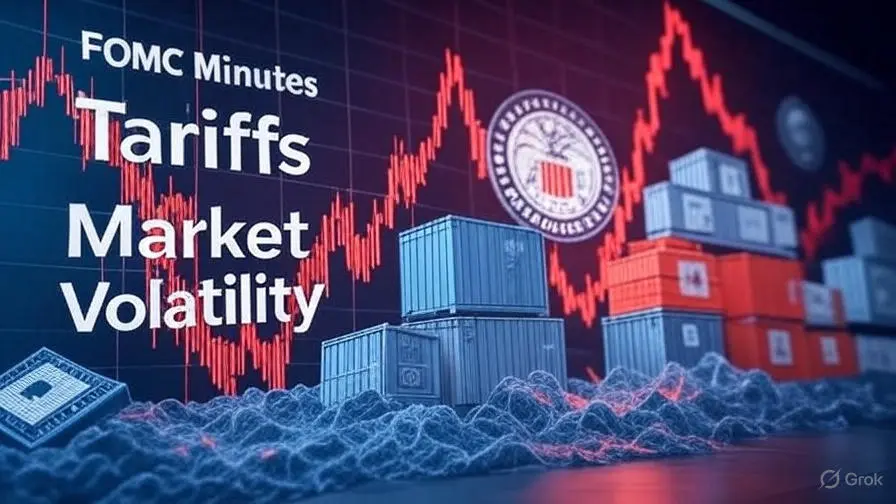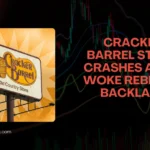The release of the FOMC twinkles has transferred ripples through the request, coinciding with a notable sell- off, particularly in the tech sector. Investors are scuffling with clashing signals, from the Federal Reserve’s station on affectation to the implicit impact of geopolitical events like tariffs. This composition will anatomize the crucial factors impacting the current request volatility, dissect recent price action, and offer perceptivity into implicit unborn movements. The request’s perceptivity to Fed dispatches and profitable data is consummate. Understanding the counteraccusations of the FOMC twinkles and the broader profitable narrative is pivotal for navigating these turbulent times. We’ll explore the interplay between financial policy prospects, inflationary pressures, and the ongoing trade controversies that are shaping investor sentiment.
FOMC twinkles and Shifting Rate Cut prospects
The Fed’s Affectation enterprises and Tariff Impact
The FOMC twinkles revealed the Fed’s significant solicitude about affectation. Chairman Powell is particularly concerned that Trump’s tariffs could enkindle affectation. This solicitude extends to tariffs on semiconductors, sword, and aluminum. These tariffs, blazoned before in the week, have formerly unsettled the request.
The Declining Odds of a September Rate Cut
request prospects for a September rate cut have been in flux. Fed finances futures originally showed high odds, with some placing it at 83 and indeed 98 at one point. still, after the release of the FOMC twinkles, these odds have been dropping. They fell to 84.9 before the twinkles and also to 81.1 by the close. The chances of an October cut have lowered, and the odds for a December cut are now below 50. This contrasts sprucely with earlier prognostications of six or seven cuts this time. Historically, Fed rate cuts frequently gesture profitable weakness. Yet, Wall Street and crypto requests feel addicted to encouragement, viewing it as bullish, important like in 2020 and 2021. That period, still, was an outlier.
Specialized Analysis Charting the Market’s Volatility
relating Bottoming Tails and Their Significance
” Bottoming tails,” also known as hammer candlesticks, can occasionally gesture request bottoms. They can also lead to temporary bounces before a downtrend resumes. Bitcoin has shown these patterns ahead, occasionally leading tocounter-trend rallies, not sustained bottoms. The S&P 500 also formed a bottoming tail moment. It rebounded off session lows, trading below the 20- period moving average and hitting the lower boundary of the pall. This pattern’s success is n’t guaranteed; it requires evidence.
Nvidia’s Influence on request Movements
Nvidia’s sharp sell- off is a crucial motorist of the request’s recent decline. The dip was bought, but the stock remains below its 10 and 20- period moving pars. The 10- period moving normal is trending over. Nvidia has also lost its diurnal pall support.However, the moving pars and pall will act as resistance, If it rallies. A bearish cross is also forming. Nvidia broke a pivotal trend line bandied history. This breakdown frequently precedes broader request corrections. Nvidia’s forthcoming earnings report coming week could add farther volatility.
NASDAQ and S&P 500 Resistance situations and Divergences
The NASDAQ 100, despite forming a bottoming tail, is still down significantly from its recent highs. It endured a sharp decline of 4.30 over six trading sessions. This drop came after hitting major resistance situations. Negative divergence on the RSI is present. The S&P 500 also stalled at major resistance. It broke a diurnal trend line connecting lows from 2023 and 2024. This resistance position has preliminarily caused retreats. The S&P is showing signs of weakness, but its instigation signals remain bullish for now. evidence of bearish signals is demanded for a larger sell- off.
The Impact of Tariffs and Geopolitical query
Trump’s Tariff adverts and request responses
President Trump’s adverts
of tariffs on sword, aluminum, and semiconductors have directly impacted request sentiment. The tech sector, in particular, has replied negatively to this news. The expectation of farther tariff adverts
, especially concerning semiconductors, is anticipated to continue causing request jitters. These trade controversies produce significant query for businesses and investors likewise.
The Interplay Between Tariffs and Fed Policy
The prospect of rising affectation due to tariffs could impact the Federal Reserve’s financial policy opinions. A further hawkish station from the Fed, driven by affectation fears, might lead them to delay or cancel anticipated interest rate cuts. This creates a delicate balance for policymakers, who must weigh affectation pitfalls against profitable growth enterprises. Such a script could further press the requests.
Future Market Outlook and Implicit scripts assaying Momentum and Trend Signals
The NASDAQ has shown clear bearish instigation and trend reversals. The S&P 500, still, has been more flexible, with bullish instigation signals still in place. For the S&P 500 to confirm a larger sell- off, these instigation and trend signals must turn bearish. A shift to a threat-off terrain would follow similar documentations.
Seasonal Trends and Anticipated Correction Timing
Seasonal patterns frequently suggest an August sell- off, which appears to be materializing, albeit with a detention. Current request action aligns with these literal trends. A bottoming in September is a possibility, following a more significant correction than what has been seen so far. This anticipated correction could see prices move towards the 50 or indeed the 200- period moving normal.
Elliot Wave Theory and Market Peaks
Using Elliot Wave proposition, the completion of Primary Wave 3 is a possibility. evidence of bearish signals across major indicators would support a Wave 4 correction, followed by a Wave 5 rally. This broader pattern could unfold through September, October, and November. Bitcoin’s own request cycle could gesture a peak in the stock request around the same time.
Conclusion Navigating the Current Market Landscape
The release of FOMC twinkles, coupled with ongoing tariff misgivings, has created significant request volatility. Specialized pointers suggest that while some indicators like the NASDAQ are showing bearish signals, the S&P 500 is still holding on. Monitoring instigation and trend signals nearly is pivotal. Investors should be prepared for a eventuality larger correction. Watch for evidence of bearish pointers before making significant moves. This careful approach will help in navigating the current request geography.



